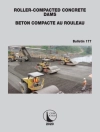This book puts together all aspects of valorization of vegetable and fruit wastes (VFWs) into different biocommodities and platform chemicals using fermentation and non-fermentation processes. VFWs are a special group of solid waste (biomass) that needs to be characterized to understand the nature of applications as raw materials and to propose an appropriate methodology for bioprocessing into value-added commodities. VFWs provide favorable conditions for the growth of microorganisms, and this opens up great opportunities for their use in fermentation processes. For example, VFWs can be used as a solid support, carbon, and nutrient source in fermentation for the production of a variety of value-added biocommodities such as enzymes, single-cell proteins, bioadsorbents, phenolic bioactive compounds, aroma and flavor compounds, and platform chemicals like lactic acid, bioethanol, and biobutanol. Researchers and academics in the area of environmental science and engineering, chemical engineering, biotechnology, life science, and food science and technology, undergraduate and graduate students, industry professionals, and policymakers will find this publication useful. Bioprocessing of agro-wastes is a recent technology for developing novel bioproducts. This book will also be of interest to the general public as a reference for all those interested in waste management.
Tabella dei contenuti
Chapter 1. Overview of Food Loss and Waste in Fruits and Vegetables: From Issue to Resources.- Chapter 2. Drying and Extraction Approach for Utilization of Vegetable and Fruit Waste.- Chapter 3. Recovery of Wasted Vegetables and Fruits for Food Additives Eva Dorta and Gloria Lobo .- Chapter 4. Phenolic and Other Bioactive Compounds from Vegetable and Fruit Waste: Extraction Methods and Their Possible Utilization.- Chapter 5. Utilization of Fruit and Vegetable Wastes for the Cultivation of Edible Mushrooms.- Chapter 6. Fruit and vegetable wastes as livestock feeds.- Chapter 7. Vegetable and Fruit Wastes As Substrate for Production of Single-Cell Protein and Aquafeed Meal.- Chapter 8. Composting and Vermicomposting Process: Relationship between Microorganism and Physic-Chemical Parameters with Special Reference to Tropical Tuber Crops.- Chapter 9. Vegetables and Fruits Wastes: Utilization in Novel Industrial Applications.- Chapter 10. Microbial Enzymes and Organic Acids Production from Vegetable and Fruit Wastes and Their Applications.- Chapter 11. Fruit and Vegetable Peels Waste: Applications in Food and Environmental Industries.- Chapter 12. Biomolecules from Orange and Grape Waste – Direct and Indirect Obtaining.- Chapter 13. Valorization of Fruit and Vegetable Waste: Yeast Fermentation.- Chapter 14. Microbial Production of Polysaccharides, Oligosaccharides, and Sugar Alcohols from Vegetables and Fruit Wastes.- Chapter 15. Fluorescent Carbon Dots from Vegetable and Fruit Wastes and Their Applications.- Chapter 16. Biocomposites from Fruits and Vegetable Wastes and Their Applications.- Chapter 17. Biofuel Production from Vegetable and Fruit Wastes: Creating a Circular Economy.- Chapter 18. Life Cycle Assessment of Valorization of Vegetables and Fruit Wastes as Biocommodities and Biofuels.
Circa l’autore
Dr. Ramesh C. Ray is a former Principal Scientist (Microbiology) and Head of the ICAR- Central Tuber Crops Research Institute (Regional Centre), Bhubaneswar, India. He has 37 years of research experience in agriculture and food microbiology, published 140 research and review papers in national and international journals, 80 books chapters, edited 22 books, and authored 3 books, and received more than 5450 citations. He is a distinguished fellow of the prestigious National Academy of Agricultural Sciences, New Delhi, India, National Academy of Biological Sciences, Chennai, India, and 8 other scientific societies.












